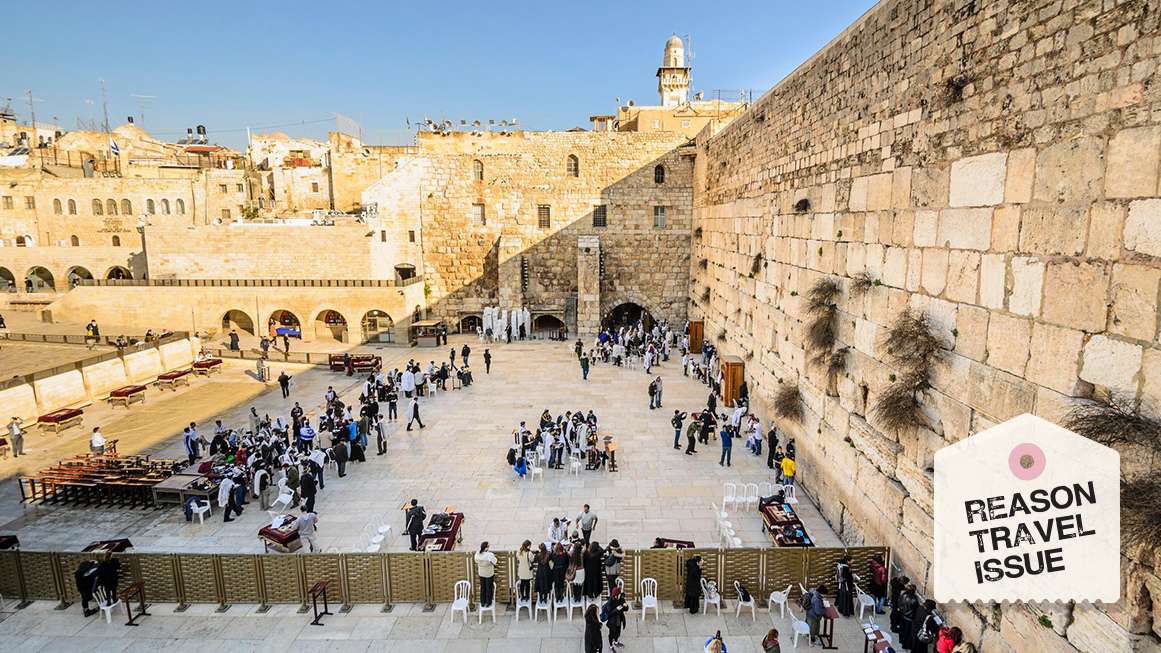Jerusalem's Endless Fascination Through Conflict and Contrast

A City of Ancient History and Modern Vibrancy
Jerusalem is a city where history, religion, and culture converge in a unique and complex way. Its ancient sites, such as the Church of the Holy Sepulchre, are shared among several denominations under a centuries-old agreement known as the "status quo." This arrangement, signed in 1757, aims to prevent interdenominational conflict by assigning specific areas of the church to different religious groups. Despite this, tensions occasionally arise between clerics who hold differing views on the rights and privileges of each group.
One of the most visible symbols of this delicate balance is an old wooden ladder that connects a ledge to an upper-level window at the church. Though the section of the building is assigned to the Armenian Apostolic Church, no one is allowed to touch the ladder, as it is considered "immovable" and any interference could lead to serious consequences.
The history of the Church of the Holy Sepulchre dates back to the 4th century when it was built under the rule of Constantine the Great. It replaced a pagan temple that had been constructed over a Jewish burial ground by Emperor Hadrian. The church was destroyed in 1009 and later rebuilt by Byzantine emperors in the 11th century. This long and turbulent history is just one small part of Jerusalem’s 5,000-year legacy, which has seen countless powers vying for control of the city.
Throughout its history, Jerusalem has been ruled by various civilizations, including the Canaanites, Egyptians, Israelites, Assyrians, Babylonians, Persians, Greeks, Romans, Byzantines, Arab caliphates, Crusaders, Mamluks, Ottomans, and the British Empire. This rich tapestry of influence has left behind layers of cultural and historical artifacts, making the city a fascinating place for visitors.
Exploring the Layers of History
For those interested in delving deeper into Jerusalem’s past, the Israel Museum and the Rockefeller Archaeological Museum offer valuable insights. Both institutions showcase a wide range of artifacts and exhibits that reflect the city’s diverse heritage. However, nothing compares to walking through the streets of Jerusalem itself, where every corner tells a story.
The first settlement in the area dates back to around 3000 BCE, near the Gihon Spring in the Kidron Valley. This area is connected to the Pool of Siloam in the City of David by a 1,750-foot tunnel, believed to have been constructed during the reign of King Hezekiah. Visitors can still walk or wade through this ancient tunnel, though they may need to bend slightly to avoid hitting their heads on the low ceiling.
Navigating the Old City can be confusing due to the names of various landmarks. For example, the Tomb of Absalom has no connection to the biblical figure, and the Tower of David is not associated with King David himself, despite being a popular venue for outdoor concerts.
Cultural and Religious Landmarks
The Western Wall is one of the most significant religious sites in Jerusalem for observant Jews. While it was the first accessible section of the retaining wall around the Temple Mount after the 1967 war, it is not necessarily holier than other exposed sections. Nearby, there are tunnels along the retaining wall that provide insight into how ancient builders managed to transport and place massive stones weighing up to 600 tons. To the right of the Western Wall lies the Ophel Archaeological Park, where visitors can walk on a Second Temple-period street and see remnants of an overpass and ritual baths from the same era.
Other notable attractions include the Arab Souk, the Temple Mount, the Dome of the Rock, and Al-Aqsa Mosque. Walking along the northern and southern ramparts of the Old City offers a great overview of the city. The northern route starts at Jaffa Gate and ends at Lions’ Gate, while the southern route begins at the Tower of David and ends between Zion Gate and Dung Gate.
A City That Never Sleeps
In addition to its historical and religious significance, Jerusalem is also a modern city with a vibrant nightlife. The Machane Yehuda market area, once closed at night, now comes alive with music and crowds. Popular spots include the Ben Yehuda pedestrian mall, Mamilla mall, and Tachana Rishona, an outdoor mall located on the site of an old train station.
Jerusalem has also experienced a renaissance in its beer, wine, and liquor scene. Craft breweries, vineyards, and microdistillers have contributed to a growing variety of drinks. For whiskey lovers, the Glen Whisk(e)y Bar is a top choice, while the Rabbit Hole and Biratenu offer excellent options for gin and beer, respectively. Cocktail enthusiasts can enjoy the speakeasy-style Gatsby Cocktail Room or Zuta, nestled in the back of a restaurant on King David Street.
Safety and Peaceful Coexistence
Despite concerns about security, life in Jerusalem remains remarkably peaceful. The Israel Security Agency has reported only four civilian deaths from terrorism in Jerusalem since October 2023, all occurring during a single incident. Israeli defense systems have effectively neutralized rocket and missile attacks, and crime rates in Israel are significantly lower than in the United States.
While the city continues to face territorial disputes, people of different faiths, cultures, and ethnic backgrounds manage to coexist. Commerce, daily tasks, and a mutual interest in avoiding conflict help maintain this fragile peace. As the clerics at the Church of the Holy Sepulchre know all too well, this balance is preferable to the alternative.
Post a Comment for "Jerusalem's Endless Fascination Through Conflict and Contrast"
Post a Comment